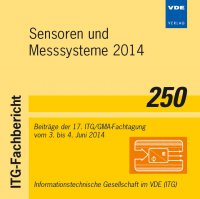Infrared Temperature Measurement System for Condition Monitoring of High Voltage Generator Circuit Breakers
Konferenz: Sensoren und Messsysteme 2014 - Beiträge der 17. ITG/GMA-Fachtagung
03.06.2014 - 04.06.2014 in Nürnberg, Deutschland
Tagungsband: Sensoren und Messsysteme 2014
Seiten: 4Sprache: EnglischTyp: PDF
Persönliche VDE-Mitglieder erhalten auf diesen Artikel 10% Rabatt
Autoren:
Wildermuth, Stephan; Ahrend, Ulf (ABB AG, Corporate Research, Wallstadter Str. 59, 68526 Ladenburg, Germany)
Hochlehnert, Moritz (ABB Ltd., High Voltage Products, Brown-Boveri-Str. 5, 8050 Zuerich, Switzerland)
Inhalt:
Measurement of the temperature of the main conductor of generator circuit breakers (GCBs) is desirable to ensure high reliability and operational safety of the entire power plant. Non-contact methods like infrared temperature sensing are highly preferred because the main conductor is on high potential of 10-30 kV (at currents of approximately 10 kA). Cost efficient thermopile sensors offer a reasonable sensitivity, but in an industrial environment their accuracy is strongly limited by external influences like e.g. temperature variations. A packaging concept for a commercial thermopile sensor supplied by Heimann Sensor GmbH, Germany, is described which ensures high accuracy in the envisioned application in a GCB in combination with being more cost efficient than comparable commercial sensor solutions. This is realized by placing the IR sensor element in an almost isothermal environment (thermal mass manufactured from aluminium) which is embedded in a thermally isolating potting material. The design was optimized by simulations and has been experimentally verified, e.g. by thermal shock tests. Very good sensor performance was found, being comparable with specifically designed dual detector radiation thermometers. In total 21 prototypes of the sensor system have been build and experimentally tested in a climatic chamber to simulate conditions often encountered in an industrial application (day/night desert scenario, humidity, etc.). Furthermore linearity of the sensors has been verified and extensive vibration tests have been done to simulate the mechanical shock during GCB operation. Robust EMI behaviour has been taken into account early in the design and the sensor has been successfully operated in a real GCB.


